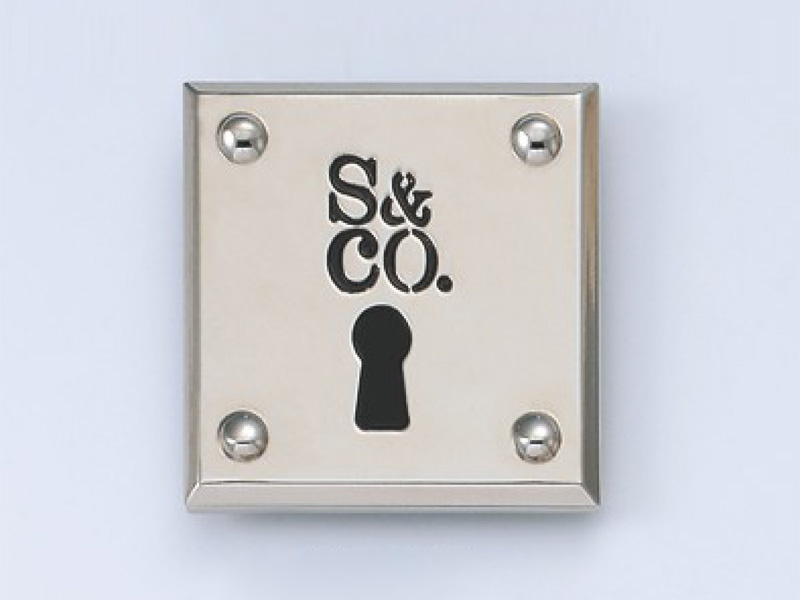Zinc alloy die castings are widely used in various decorative fields, such as tie clips, belt buckles, various metal decorative buckles, etc. Therefore, the surface quality of the castings is required to be high, and good surface treatment performance is required. The most common defect of zinc alloy die castings is surface blistering. The bulging package on the surface of castings under the following conditions is called bubbling, which is the external manifestation of internal defects in castings.

(1) Die casting will be found out.
(2) Exposure after polishing or processing.
(3) Appear after painting or plating.
(4) It was found after a period of time.
Causes
1. Cavitation is mainly caused by stomata and contraction mechanism. The stomata are usually round and the contraction is mostly irregular.
Causes of pore formation: During filling and solidification of liquid metal a, pore formation on the surface or inside of castings is caused by gas intrusion. B. Invasion of vaporized gas from paint. C alloy liquid contains too much gas and precipitates during solidification. When the gas in the cavity, the volatile gas from the coating and the gas from the alloy solidification are not exhausted properly in the die, the air holes formed in the castings will be left at last.
Causes of shrinkage: During the solidification of liquid metal, shrinkage occurs because of shrinkage of volume or lack of liquid metal feeding at the final solidification site. B. Local overheating of uneven thickness castings or castings results in slow solidification at a certain part and concave surface formation during volume shrinkage. Because of the existence of air holes and shrinkage holes, the holes may enter into water during surface treatment of die castings. When spraying paint and baking after electroplating, the gas in the holes will expand by heat; or the water in the holes will change into vapor and volume expansion, which will cause foaming on the surface of castings.
2. Intergranular corrosion causes: harmful impurities in zinc alloy components: lead, cadmium and tin will gather at the grain boundary and lead to intergranular corrosion. Metal matrix will be broken by intergranular corrosion. Electroplating accelerates this scourge. The parts affected by intergranular corrosion will expand and the coating will be jacked up, resulting in foaming on the surface of castings. Especially in wet environment, intergranular corrosion will cause casting deformation, cracking, and even breakage.
3. Cracks: water marks, cold isolation marks and hot cracks.
Watermark and cold barrier: In the filling process of liquid metal, the contact wall of liquid metal solidified prematurely, and then the liquid metal could not be fused with the solidified metal layer. The overlapping pattern was formed at the butt of the casting surface and strip defects appeared, as shown in Figure 2. Watermarks are usually on the shallow surface of castings, while cold barriers may penetrate into the inner part of castings. Hot crack: a when the casting thickness is uneven, the solidification process produces stress; B is premature ejection, metal strength is not enough; C is uneven ejection force; D is too high mold temperature makes the grain coarser; e is harmful impurities.
When there are water marks, cold barriers and hot cracks in die castings, the solution will infiltrate into the cracks during electroplating, and turn into vapor when baking, and the plating layer will bubbled up by air pressure.
Solutions to Defects
The key to control the production of gas holes is to reduce the amount of gas mixed into the casting. The ideal metal flow should be accelerated from the nozzle to the cavity through the diversion cone and runner to form a smooth and uniform metal flow. The conical runner design means that the flow should be reduced from the nozzle to the inner runner at a constant speed, so that it can be achieved. This is the goal. In the filling system, the gas mixing is due to the mixing of turbulence and liquid metal to form pore. From the study of the simulation die casting process in which liquid metal enters the mold cavity from the casting system, it is obvious that the sharp transition position and the increasing cross-section area of the runner will make the liquid metal flow turbulent and entraining gas, and the smooth liquid metal flow will occur. In order to facilitate the gas from the runner and cavity into the overflow slot and exhaust slot, discharge out of the die.
For shrinkage: to make all parts of the die casting solidification process as uniform as possible heat dissipation, and solidification at the same time. Shrinkage can be avoided by reasonable nozzle design, inner gate thickness and location, die design, mould temperature control and cooling.
For the phenomenon of intergranular corrosion, it is mainly to control the content of harmful impurities in alloy raw materials, especially lead < 0.003%. Pay attention to the impurities brought by waste.
For water marks and cold partition marks, the appearance of cold partition marks can be reduced by increasing the temperature of the die, increasing the speed of the inner gate, or increasing the overflow groove in the cold partition area.
For hot cracks: do not change the thickness of die castings sharply to reduce stress generation; adjust the relevant die casting process parameters; reduce die temperature.
Causes of Foaming in Zinc Alloy Electroplating:
Surface treatment before electroplating is the main cause of zinc alloy foaming, because zinc alloy is amphoteric metal, easy to react with acid, also easy to react with alkali. Generally, there are two processes before electroplating, deoiling and pickling.
Deoiling is generally alkaline deoiling agent at room temperature, and pickling solution is usually a mixture of triacid (HCL H2SO4 HNO 3)
Deoiling is the main cause of foaming in zinc alloy plating.
Oil removal is usually done by soaking and stirring at room temperature with heated deoiling agent for a long time, and the chemical reaction time is longer. Generally, the acid pickling time is shorter, so it is not easy to produce this bubbling phenomenon. (Because the acid pickling uses strong acid in proportion, it has strong corrosion, so the zinc alloy can be electroplated without deoiling, activated by sulfuric acid.)
Zinc alloy plating process:
Because of the relationship between the dielectric potential of zinc alloy metal, zinc alloy can not be directly coated with silver, nickel, gold, etc. on the surface. It needs to be coated with a thicker intermediate layer of copper (usually about 5 microns).
However, the loose structure of zinc alloy after die casting can also lead to foaming phenomenon, which belongs to unqualified die casting. Generally, the unfavorable rate of this phenomenon is not too high, which requires us to analyze what process the foaming phenomenon occurs in.


